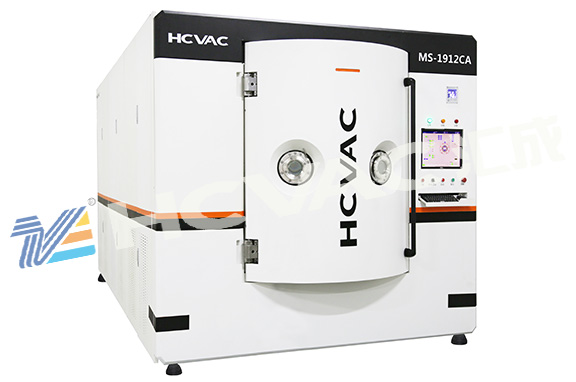The surface of the workpiece is coated with a thin film layer by a pvd coating machine. In the process of coating the film layer, there are several coating technologies, such as evaporation coating technology, ion multi-arc coating technology, and magnetron sputtering coating technology. With ion multi-arc coating technology, arc discharge generally occurs. When magnetron sputtering is used, glow discharge occurs mostly. Glow discharge is divided into glow discharge and abnormal glow discharge. Many people do not particularly understand the principle, so they are very confused. The following is a vacuum editor to introduce the two discharge methods of the vacuum coating machine in detail:

glow discharge
Low pressure gases generally produce glow discharges after ignition. When the gas pressure is about 100 Pa and the applied voltage is moderate, the discharge shows 7 regions of light and dark. The sequence from cathode to anode is divided into 7 zones.
① Aston dark area: It is a very thin layer of dark area in front of the cathode, which was discovered by F.W. Aston in experiments in 1968. In this region, the electrons have just left the cathode, the flight distance is still short, and the energy obtained from the electric field is not enough to excite the gas atoms, so no light is emitted.
②Cathode bright region: Immediately next to the Aston dark region, since the electrons have enough energy to excite atoms after passing through the Aston dark region, the region formed by excitation in this region, when the excited state atoms return to the ground state glow.
③ Cathode dark area: also known as Crooks dark area. The electrons arriving in this area have higher energy, which is favorable for ionization but not for excitation, so the luminescence is weak.
④ Negative glow area: It is close to the cathode dark area and has a clear boundary with the cathode dark area. The light is the strongest at the dividing line, then gradually becomes weaker, and turns into the dark area, that is, the Faraday dark area described later. The electron energy in the negative glow region is relatively dispersed, and it is rich in both low-energy electrons and high-energy electrons.
⑤ Faraday dark area: the transition area from the negative glow area to the positive column area. In this region, the electron energy is very low, no excitation or ionization occurs, so it is a dark region.
anomalous glow discharge
Magnetron sputtering generally belongs to abnormal glow discharge. The entire cathode is covered with glow, and if the current drawn is increased, abnormal glow discharge occurs. At this time, the cathode drop is very large, and the width of the drop region is reduced. Large cathode drop and high current density can lead to sputtering of cathode material. In discharge devices, the gettering effect of sputtering reduces the gas pressure in the device and changes its gas composition, while the conductive film formed by sputtering reduces the insulation between electrodes. The phenomenon of cathode sputtering can also be used as a means of material coating, which is sputter coating.
arc discharge
The
pvd coating machine adopts multi-arc ion plating, which belongs to arc discharge. If the current limiting resistance of the glow discharge is reduced, the discharge current will increase, and it will be transferred to arc discharge. Arc discharge is characterized by high current density and low inter-electrode voltage, and its self-sustainability depends on new electron emission mechanisms, namely thermal emission and cold emission. The thermal emission is caused by the local high temperature caused by the bombardment of the cathode by positive ions; the cold emission is caused by the local strong electric field on the surface of the cathode. The former is called thermionic arc, and the latter is called the cold cathode arc. The carbon electrode arc as a strong light source is the thermionic arc; the mercury arc rectifier used in the power industry uses a cold cathode arc.
An important feature of arc discharge is the presence of cathode bright spots on the cathode. The bright spot of the thermionic arc is generally fixed; the bright spot on the liquid mercury surface of the cold cathode arc such as the mercury arc rectifier is jumping and moving. The cathode bright spot is the source of electron emission with current densities as high as hundreds to thousands of A/cm2。
The voltammetric characteristics of arc discharge vary with electrode material, gas type, and pressure. The carbon arc in the atmosphere exhibits typical negative resistance characteristics, so a current-limiting resistor must be connected to the external circuit to stabilize the current. The arc discharge produces intense radiation, the intensity of which increases with gas pressure and current density. The highest temperature in the discharge zone is about 4200K at one atmosphere, 6520K at 10 atmospheres, and 10000K at tens or hundreds of atmospheres. Carbon arc is the earliest light source. Various high-pressure discharge lamps, such as high-pressure mercury lamps, xenon lamps, and sodium lamps, are light sources for arc discharge in tube bulbs. Arc welding and arc cutting are widely used in industry; the high temperature of the arc can be used as the heat source of the electric furnace.



